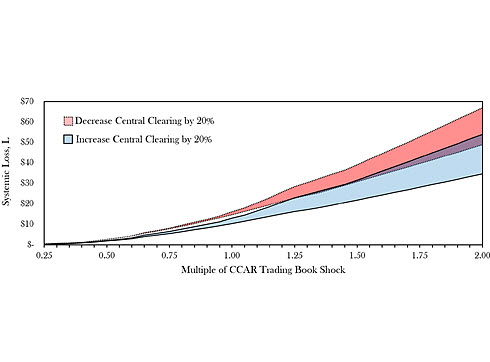Central Counterparty Default Waterfalls and Systemic Loss
Published: June 18, 2020
This paper examines how a central counterparty (CCP) uses a default waterfall to manage and allocate resources to cover defaults of clearing members and clients. A resilient waterfall ensures cleared payments are paid in full and on-time, reducing the threat to financial stability from losses and their spillovers. However, the amount of resources collected and their allocation affect clearing incentives. This paper models and evaluates the trade-offs between resiliency and participation in a credit default swaps market. It finds that the benefits of greater central clearing rates generally dominate the benefits of increased waterfall resources. (Working Paper no. 20-4)
Abstract
Central counterparty default waterfalls act as last lines of defense in over-the-counter markets by managing and allocating resources to cover defaults of clearing members and clients. However, central counterparties face competing objectives in setting up their default waterfalls. In this paper we evaluate the trade-offs between default waterfall resiliency and central clearing, using a unique and comprehensive dataset containing all U.S. cleared and bilateral credit default swap positions. We evaluate the resiliency of different default waterfall designs, accounting for the interconnectedness of payments in the system, the presence of client clearing obligations for members, and the distribution of losses among market participants.
Keywords: central counterparty, systemic risk, default waterfall, financial networks, credit default swaps
JEL Classifications: G10, G23, G28, L14
